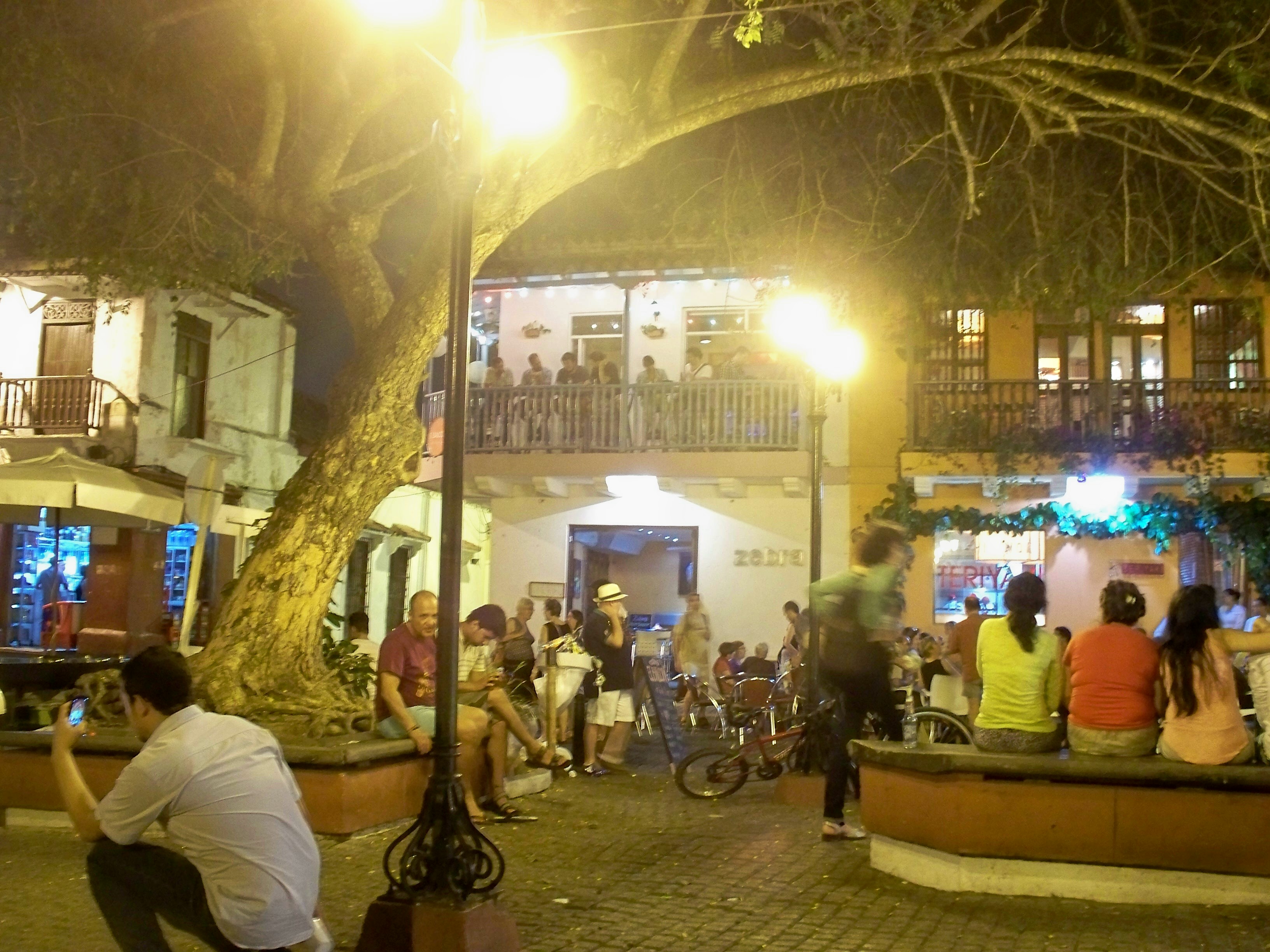30 April 2014
Cartagena de Indias sits right on the Caribbean coast of Colombia, along the western end of the Spanish Main. Encircled by thick stone ramparts topped with guard posts and enfilades as protection against the depredations of pirates and quasi-legal buccaneers like Sir Francis Drake (who sacked the city in 1584), the city once saw half the gold of the New World flow through its port, to say nothing of countless thousands of Africans condemned to be sold in the slave market.
Many local citizens got rich, leaving the city a living museum of Spanish colonial houses and public buildings. Elaborately carved wooden balconies overhang narrow streets. Bougainvillea drips down the sides of windows and gateposts. Mansions, warehouses and monasteries have been converted into museums or boutique hotels and restored to the glories of the original builders.
But besides the antique beauty, Cartagena revels in the modern-day human element. As the sun dips towards the horizon beyond the Caribbean, the blanket of daytime heat begins to lift and the life of the city flows into the streets. After dark, the lanes hum with palpable joy. Street musicians and performers claim nooks and crannies, sending out tango and vallenato sounds, breaking into impromptu cumbia dances, devising statuesque poses to attract the passersby.
The old walled city is cut into neighborhoods, each focusing around a public plaza or two. Near the outer walls is Getsemani, where the artisans once lived. Still a ragged collection of crumbled walls and partly renovated homes, Getsemani’s inhabitants cluster in Plaza de la Trinidad, with its little neighborhood church (which featured, when we were there, a side storage room with a temporary international art exhibit on the migration and decline of the birds and the bees) and a trio of larger than life statues of Pedro Romero and friends. It was here that Romero first declared short-lived Colombian independence in 1811.
The old Plaza of the Inquisition (where a dozen citizens once burned in a mass trial) has been transformed into Plaza Bolivar, complete with majestic statue of horseman Bolivar and circling cart vendors offering ice cream, Cuban cigars, pigeon crumbs and beer. At the Plaza San Pedro Claver and adjacent Plaza de la Aduana, metal sculptures by Carmona depict scenes of men playing chess, women working sewing machines, a butcher preparing to chop meat, and the like. Children can’t resist joining the scenes themselves. Plaza San Diego is the humblest inside the inner walled city. There’s nothing much beyond the cooling night breeze to draw folks to its benches, but for locals it feels as if the plaza still belongs to them, rather than the city’s many visitors. On Plaza Fernandez Madrid we encounter street dancers, two sidewalk cafes, and a corner bottle shop that supplies the plaza’s wanderers with all the inspiration they need and more.

The plazas belong to everybody; here in Fernandez Madrid a fresh set of stories are unfolding with the night.
We move like slithering ghosts along the edges of crowds, past clusters in sidewalk cafes, diverging down any side street that beckons. At last, in Plaza de Santo Domingo we pause at an outdoor café, letting the vendors and the street musicians drift past. A plump Botero nude—sculpted body gleaming with a warm metal sheen—lies along a corner of the plaza, facing off against the heavy stonework of Santo Domingo church. The moon is above the rooftops, lighting long street corridors down towards Casa de Gabriel Garcia Marquez, the Nobel-winning novelist who will die in Mexico City the following month, and never again see the view out over the ramparts—churning now with an impromptu street dance—and the choppy waves of the sea beyond.
Around us the bustle of the city ebbs and flows, until at last we succumb to romantic temptation and board one of the waiting horse carriages for a clip-clopping ride that circles around and past the spots we’ve been navigating on foot. Snatches of tunes drift up from random street corners and cafes. At the far end of the ramparts, where the Baluarte San Francisco Javier rises, we stop and listen to the final set of the cumbia performers working the open air setting of a café. The moon is high, the breeze is light, and the long dark span of the Caribbean seems to go on forever.
[See also “Street Art of Cartagena, Colombia 2014” on my Travel Photos page. I’ll be posting a further set of more general photos in May, titled “Cartagena Scenes.”]


